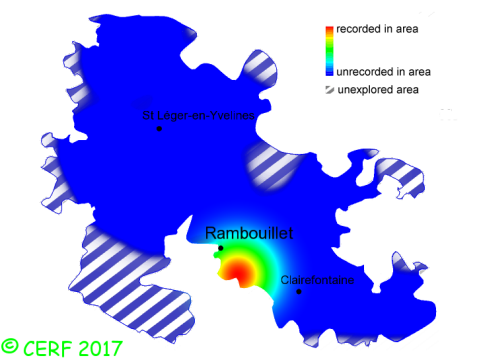|
Xerocomus armeniacus (Quél.) Quél.
|
New classification: Basidiomycota/Agaricomycotina/Agaricomycetes/Agaricomycetidae/Boletales/Boletaceae
Former classification: Basidiomycota/Homobasidiomycetes/Agaricomycetideae/Boletales/Boletaceae
synonyms: Xerocomellus armeniacus, Boletus armeniacus, Xerocomellus armeniacus
(unconfirmed synonyms: Rheubarbariboletus armeniacus)
edibility : edible
|
|
|
The cap is lilac pink to orange pink or apricot, fleshy, convex then expanded.
The cap surface is dry and never viscid, downy-felty, often cracking into large patches when drying.
The stem is yellowish to concolorous with cap, cinnamon-orange at its base, slightly striate, tapering towards base and slightly rooting.
The flesh is pale yellow, cinnamon-orange at the stem base, turning blue slowly when cut, especially in the stem's apex or above the tubes; its taste is mild, faint; the odour is faint or indistinct;
The tubes are adnate to almost decurrent, short. They are yellow then become greenish-ochre, turning blue when cut.
The pores are large, bright yellow, turning blue when pressed.
The spore print is olive brown.
It grows in broad-leaved woods, but also with conifers, in grassy and well lit places.
The fruiting period takes place from SeptemberSeptember to -January.
| Dimensions: | width of cap approximately 7 cm (between 3 and 10 cm) |
| | height of stem approximately 7 cm (between 3 and 12 cm) |
| | thickness of stem (at largest section) approximately 14 mm (between 5 and 25 mm) |
| | spores : 11-14 x 4,5-5 microns, spindle-shaped, smooth |
Distinctive features : lilac pink to orange pink or apricot coloured cap, often cracked when drying; yellow stem, but cinnamon-orange at its base, yellow to green pores, turning blue when pressed
Xerocomus armeniacus is rare and confined in the forest of Rambouillet, and is infrequent, more generally speaking
.
|  | | Above : distribution map of Xerocomus armeniacus in the forest of Rambouillet |
|
page updated on 14/01/18
